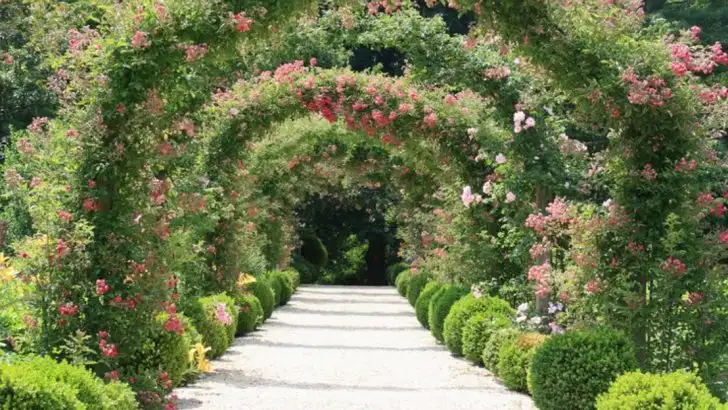Some gardens grow vegetables. Others grow stories. Behind every heirloom rose and hand-dug path lies something deeper—memory, tradition, and a fierce kind of love. These aren’t cookie-cutter backyards built for curb appeal. They’re living albums. They hold birthdays, secrets, recipes, and the scent of lilacs that bloomed the year your mother turned ten. Grandmothers know this better than anyone. They plant with purpose. Each design—every winding border, shaded bench, or old peony—is a quiet message to the next generation: Remember who you are. And where you come from. These 20 gardens don’t just look beautiful. They carry legacy. And if you’re lucky enough to inherit one—or inspired enough to begin one—you’ll understand why the roots always run deeper than the flowers. Let’s walk through them.
Victorian Rose Garden
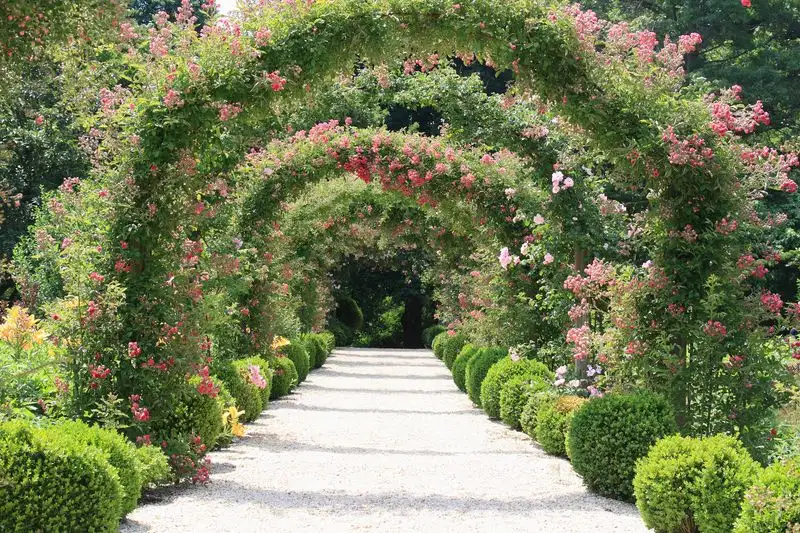
Roses have always captivated hearts with their timeless beauty, and Victorian rose gardens epitomize this allure. Imagine your grandmother, in her sunhat, tending to roses in varied shades of red, pink, and white, each carefully chosen for its scent and bloom.
The garden is arranged meticulously, with climbing roses trailing elegantly over arbors. This design is a testament to romanticism and heritage. Through her nurturing hands, the roses continue to thrive, passing their fragrant legacy to future generations.
Did you know? The Victorian era popularized the language of flowers, where every rose color had a unique meaning.
Cottage Herb Garden
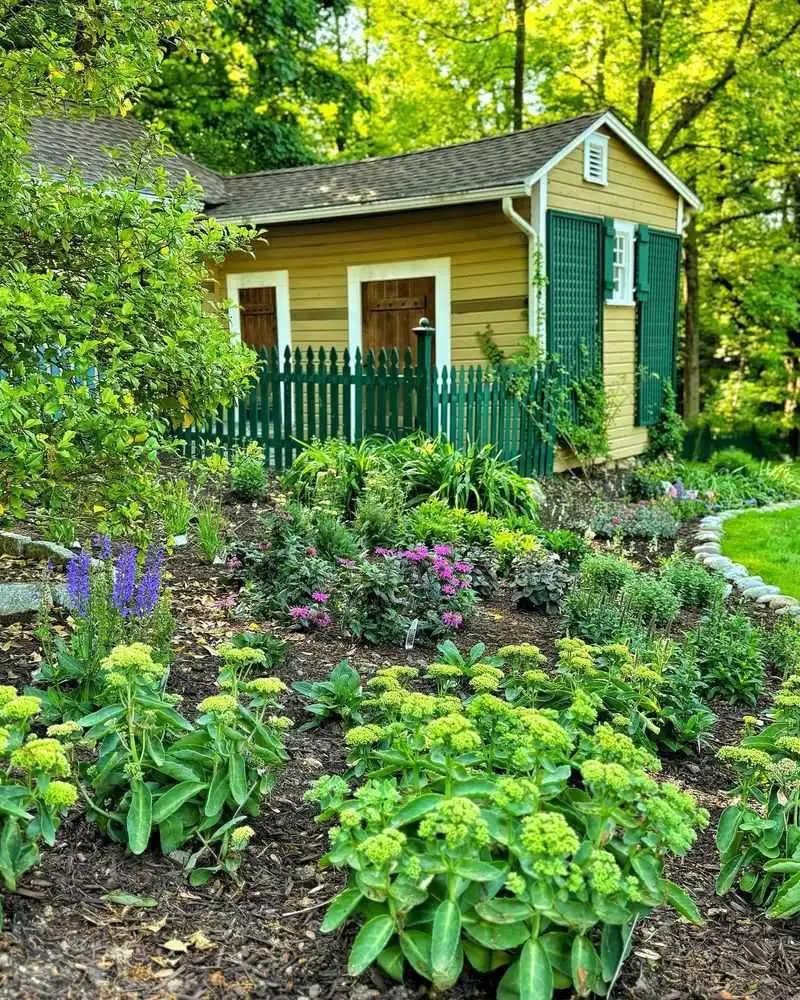
A cottage herb garden is more than just a collection of plants; it’s a veritable pharmacy and kitchen pantry. Picture a grandmother among aromatic herbs like lavender, thyme, and rosemary. She’s sharing secrets of herbal teas and remedies, a tradition handed down through the ages.
The garden’s layout is informal yet purposeful, with a stone path meandering through lush greenery. Each plant has its place, not just for culinary use but for its medicinal properties as well.
Interesting tidbit: Many cottage gardens were designed to be self-sufficient, offering sustenance and healing in one.
Zen Meditation Garden

In the hustle of modern life, a Zen meditation garden offers a sanctuary of calm. Envision an elderly figure creating meticulous patterns in gravel, each stroke a meditative practice.
Surrounded by artful bonsai trees and gentle bamboo water features, the garden radiates tranquility. It provides a sacred space for reflection and mindfulness, harmonizing the natural and spiritual worlds.
Fun fact: Zen gardens, or Karesansui, originated in Japan and are characterized by their minimalist design, focusing on simplicity to aid meditation.
English Cottage Garden
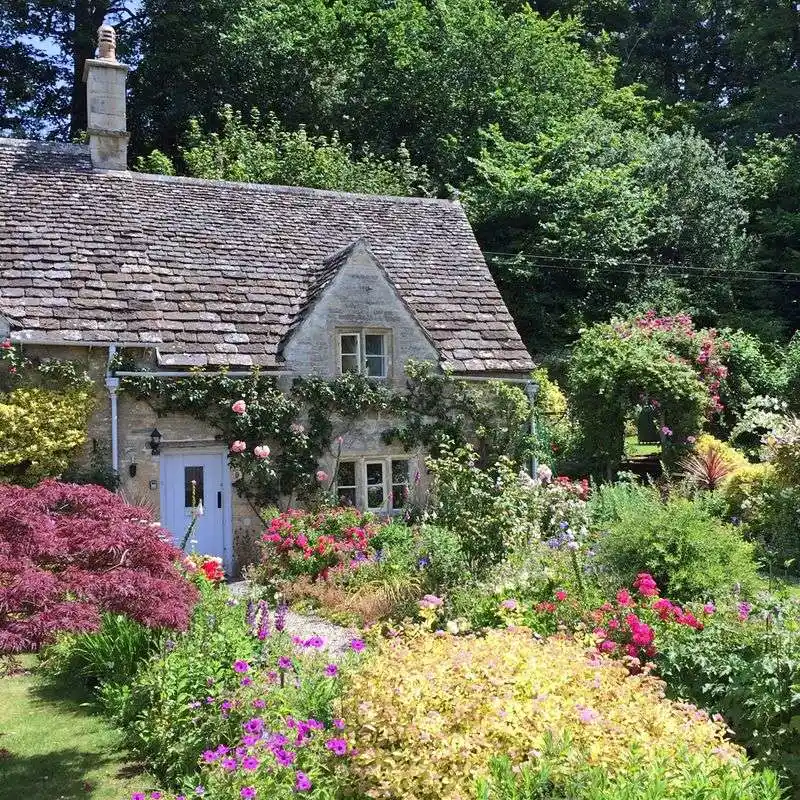
English cottage gardens enchant with their riot of colors and informal charm. Picture a grandmother, watering can in hand, amidst a delightful mix of wildflowers and perennials.
The garden is a tapestry of color, where foxgloves and poppies intermingle freely. Its quaint picket fence and wooden gate add to the rustic allure, making it a haven for bees and butterflies.
Did you know? Cottage gardens date back to the Elizabethan era, originally grown for food and medicine, now cherished for their beauty and biodiversity.
Japanese Tea Garden
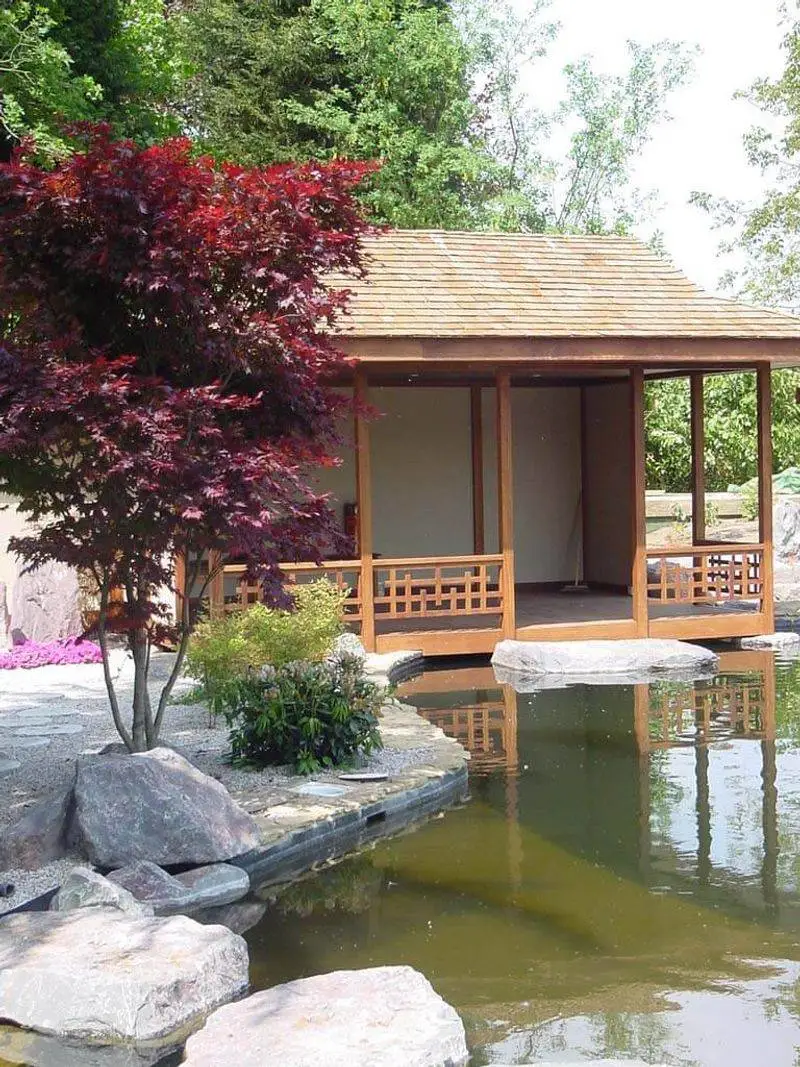
A Japanese tea garden is a celebration of tranquility and aesthetics. Picture a serene space where an elderly woman conducts a tea ceremony, embodying grace and tradition.
The garden’s elements, including stone lanterns and a gently arching wooden bridge over a koi pond, are meticulously arranged to create harmony. It’s a place where nature and serenity blend seamlessly.
Fun fact: The Japanese tea garden, or chaniwa, is designed to complement the tea ceremony and reflect the principles of harmony, respect, purity, and tranquility.
Mediterranean Courtyard Garden
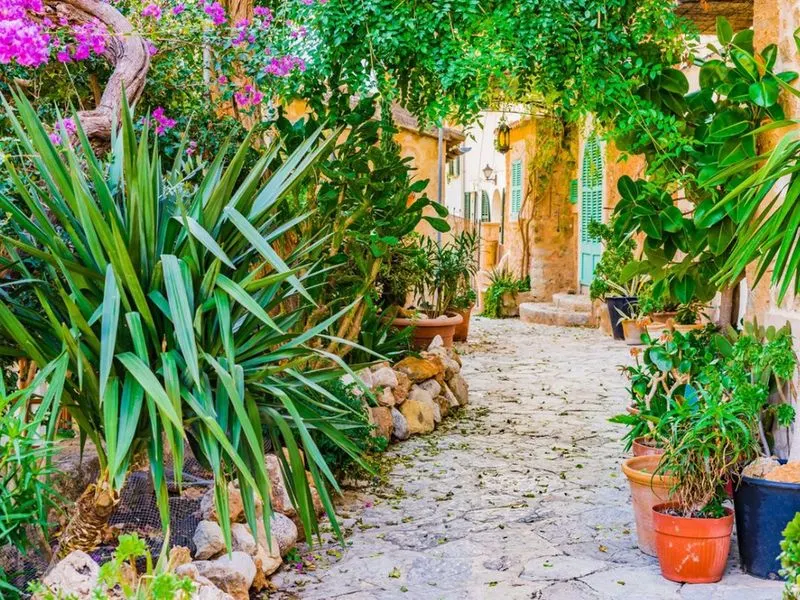
Imagine the warmth of a Mediterranean courtyard garden, where citrus trees and vibrant bougainvillea thrive. A grandmother picking lemons amidst terracotta pots filled with herbs is a common sight.
The garden’s design balances beauty and functionality, with olive trees providing shade and a gentle fragrance in the air. The rich hues of the flora resonate with the deep cultural roots of the region.
Did you know? Mediterranean gardens are designed to withstand dry summers, using drought-resistant plants that evoke the region’s romantic charm.
Wildlife-Friendly Garden
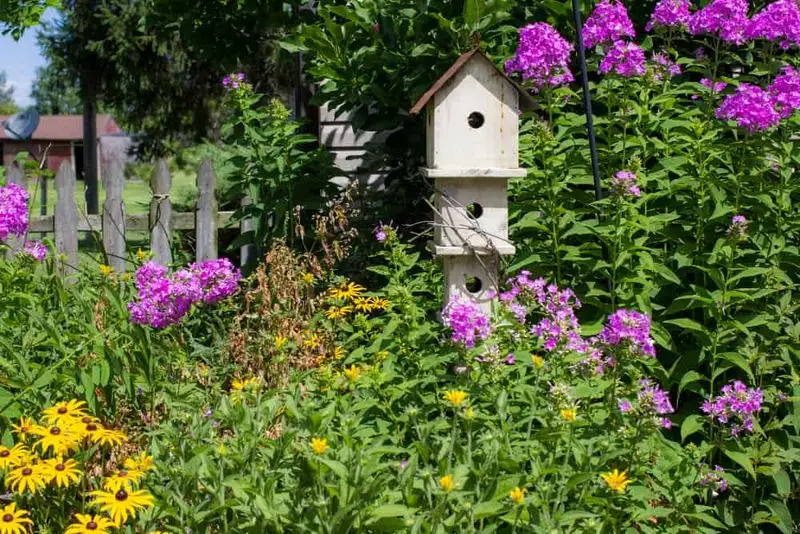
For those who cherish nature, a wildlife-friendly garden is a sanctuary for local fauna. Picture an elderly figure, feeding birds amidst native plants and birdhouses.
The garden teems with life, from the gentle rustle of frogs near the pond to the flutter of butterflies. Each element is thoughtfully chosen to invite and support wildlife.
Fun fact: Creating a wildlife-friendly garden helps maintain biodiversity, offering a refuge for various species in urban landscapes.
Italian Renaissance Garden
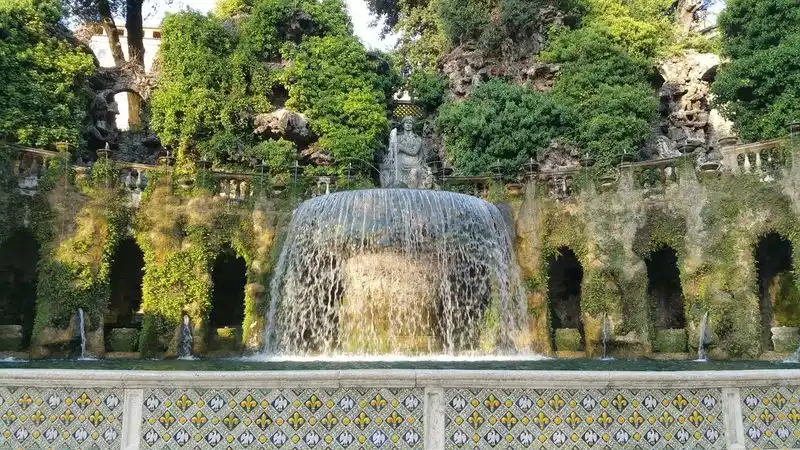
Step into an Italian Renaissance garden where art and nature intertwine. Imagine a grandmother admiring classical statues amidst symmetrical hedges.
The garden’s layout is a masterpiece of order and beauty, with a central fountain adding a touch of grandeur. It reflects the Renaissance ideals of harmony and proportion.
Did you know? These gardens were inspired by Roman designs and emphasized philosophical ideas of beauty, order, and man’s relationship with nature.
Rustic Farmhouse Vegetable Garden
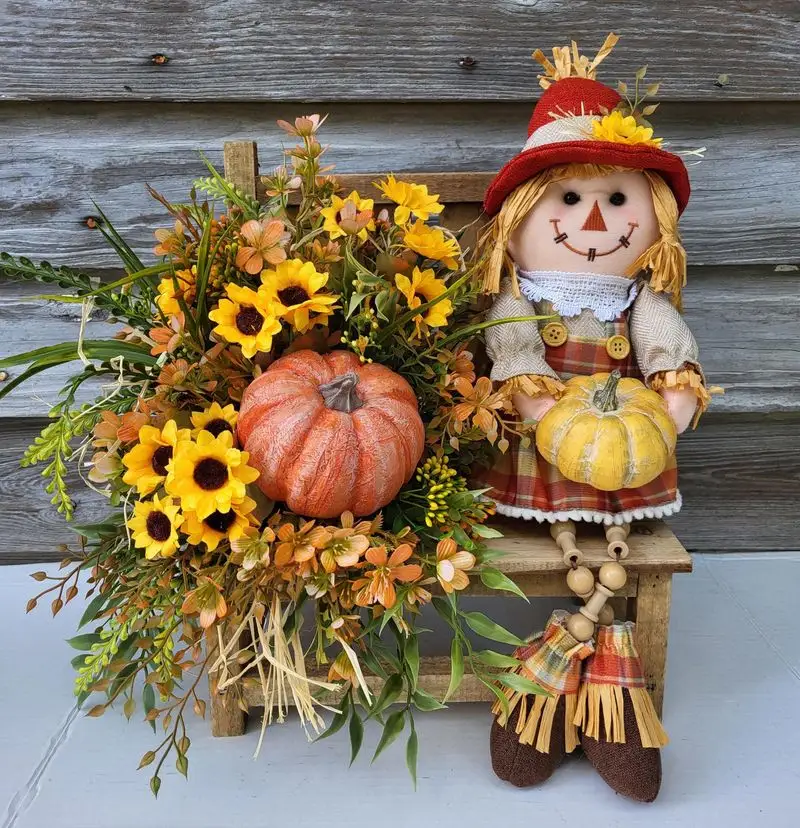
The charm of a rustic farmhouse vegetable garden lies in its blend of productivity and simplicity. Picture a grandmother harvesting vibrant vegetables surrounded by wooden crates.
With rows of tomatoes, beans, and corn, the garden is a testament to self-sufficiency and the joy of homegrown produce. A scarecrow stands watch, adding a touch of whimsy.
Did you know? Farmhouse gardens have historically been essential for sustenance, embodying a connection between land and family.
Native Plant Garden
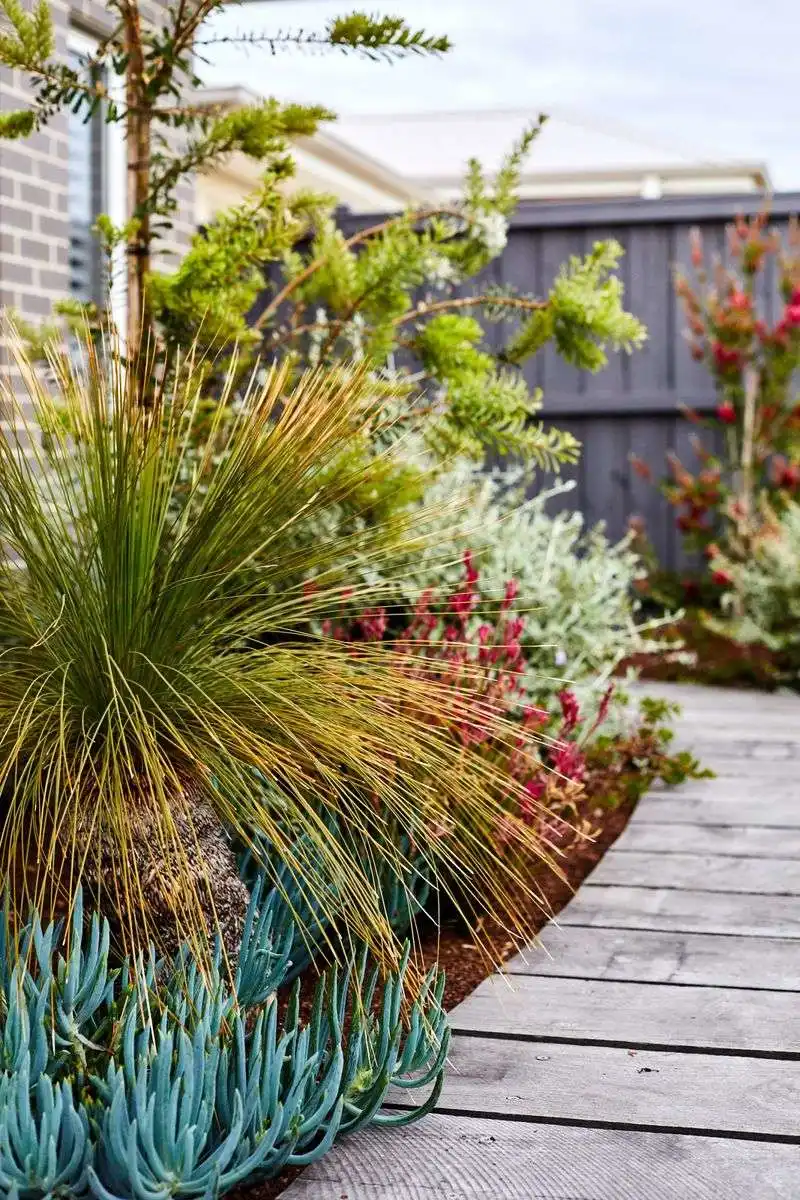
A native plant garden celebrates the unique flora of a region. Envision a grandmother lovingly planting wildflowers endemic to her homeland.
The garden thrives with a natural rock pathway and plants perfectly adapted to local conditions. It represents an ecological commitment to preserving local biodiversity.
Fun fact: Native plant gardens are beneficial for local ecosystems, offering habitats for native wildlife and requiring less water and maintenance.
French Parterre Garden
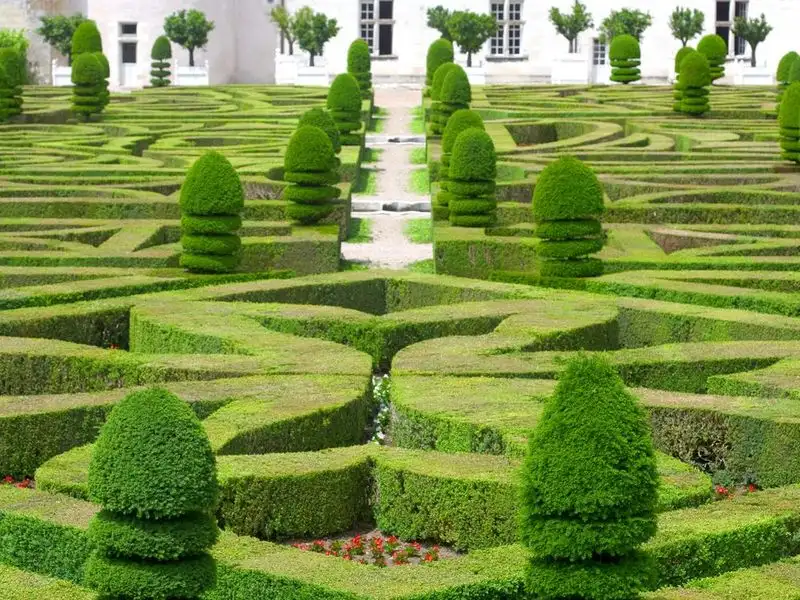
The elegance of a French parterre garden lies in its geometric precision. Picture a grandmother meticulously trimming hedges into symmetrical patterns.
The garden’s designs are intricate, with colorful flower beds creating visual delight. It showcases the artistry of formal gardening, where every element is in perfect harmony.
Did you know? Parterre gardens became popular in 17th-century France, symbolizing control over nature through their structured layouts.
Tropical Paradise Garden
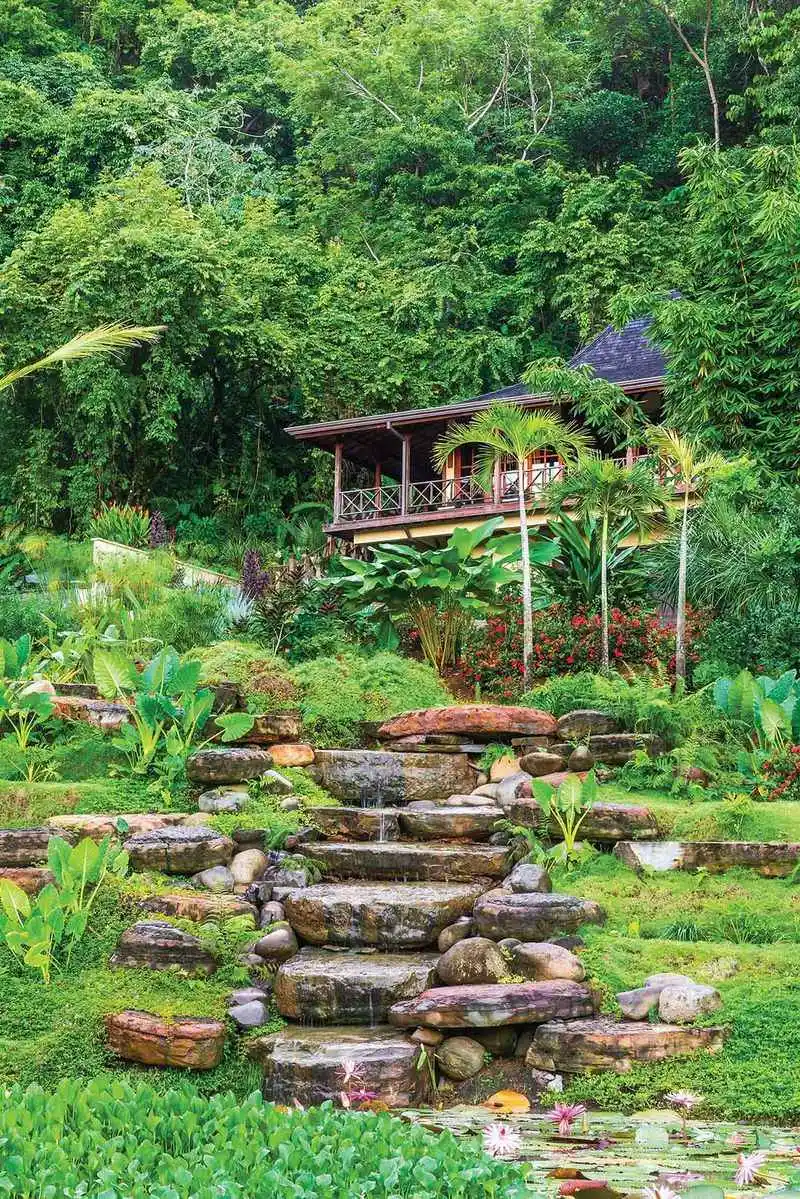
Imagine a vibrant tropical paradise garden, an oasis of exotic plants and tranquility. A grandmother, watering can in hand, tends to bright orchids and lush palm trees.
The garden’s atmosphere is one of lush abundance, with a small waterfall adding to its soothing ambiance. It’s a celebration of nature’s exuberance and color.
Did you know? Tropical gardens are designed to mimic rainforests, utilizing plants that thrive in warmth and humidity.
Victorian Fernery
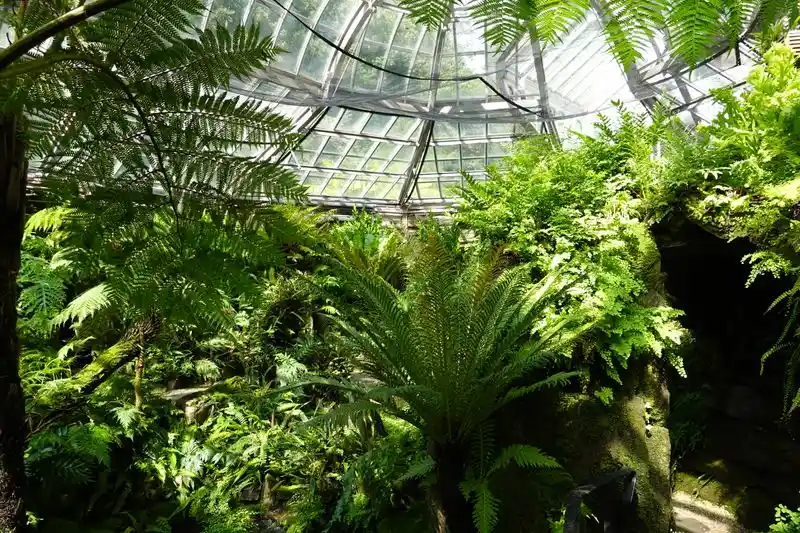
Step into a Victorian fernery, where an elderly woman carefully mists her collection of ferns. This specialized garden showcases the lush beauty and variety of ferns.
The ornate glass structures provide the perfect environment for these delicate plants, creating a microclimate of verdant tranquility. It’s a testament to Victorian horticultural passion.
Fun fact: Ferns were a symbol of wealth during the Victorian era, and ferneries became fashionable status symbols.
Spanish Courtyard Garden
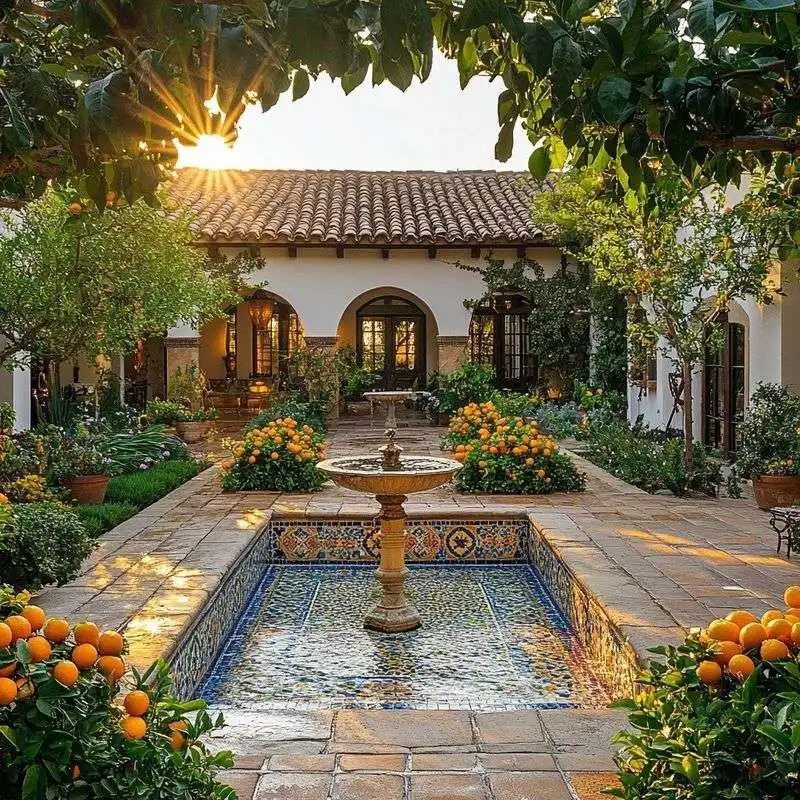
In a Spanish courtyard garden, color and warmth abound. Picture an elderly lady enjoying the shade near a colorful tiled fountain.
Terracotta pots overflow with flowers, and climbing vines add a lush backdrop. It’s a harmonious blend of architecture and nature, perfect for relaxation.
Did you know? Spanish courtyard gardens are designed for coolness and privacy, often featuring water elements to soothe the senses.
Edible Flower Garden
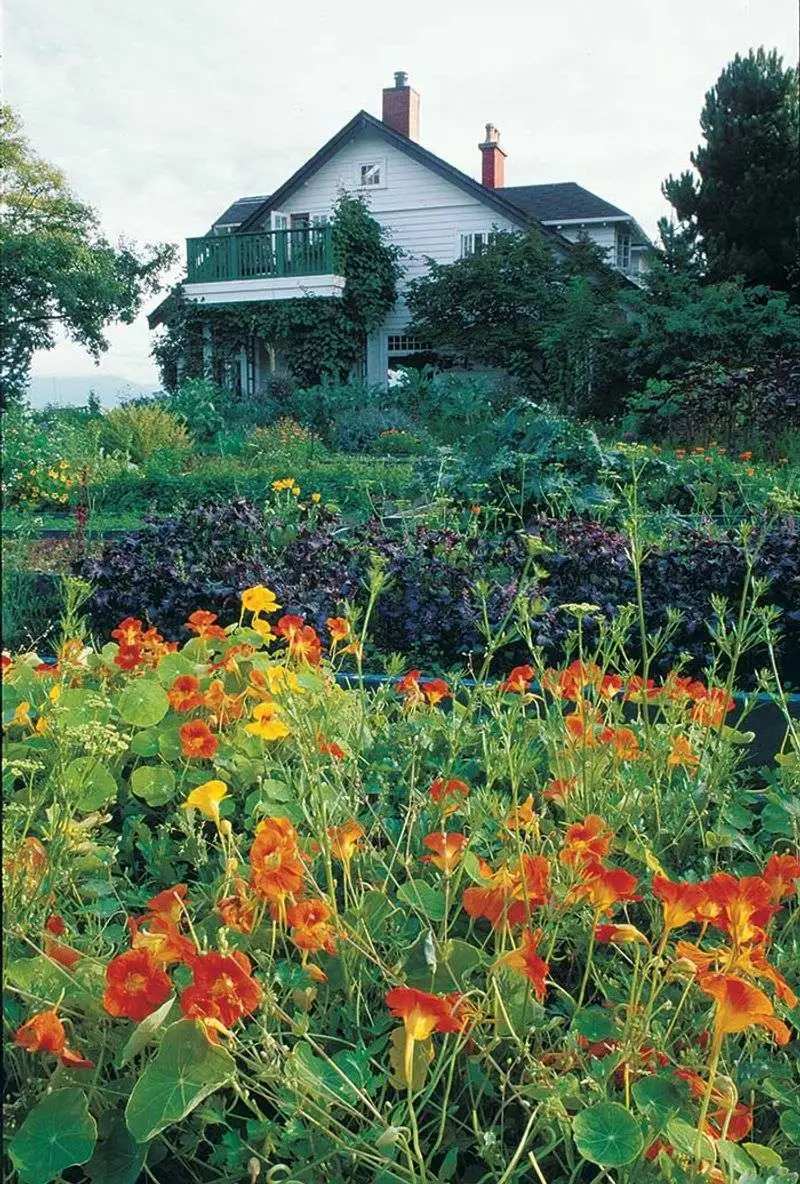
An edible flower garden offers beauty and flavor. Envision a grandmother picking colorful blooms in her garden, where aesthetics meet culinary delight.
Raised beds hold a variety of flowers like nasturtiums and pansies, each adding a unique taste to dishes. The quaint garden shed nearby houses her gardening tools and secrets.
Did you know? Edible flowers have been used in cooking for centuries, offering both nutritional benefits and artistic presentation.
Shade Garden
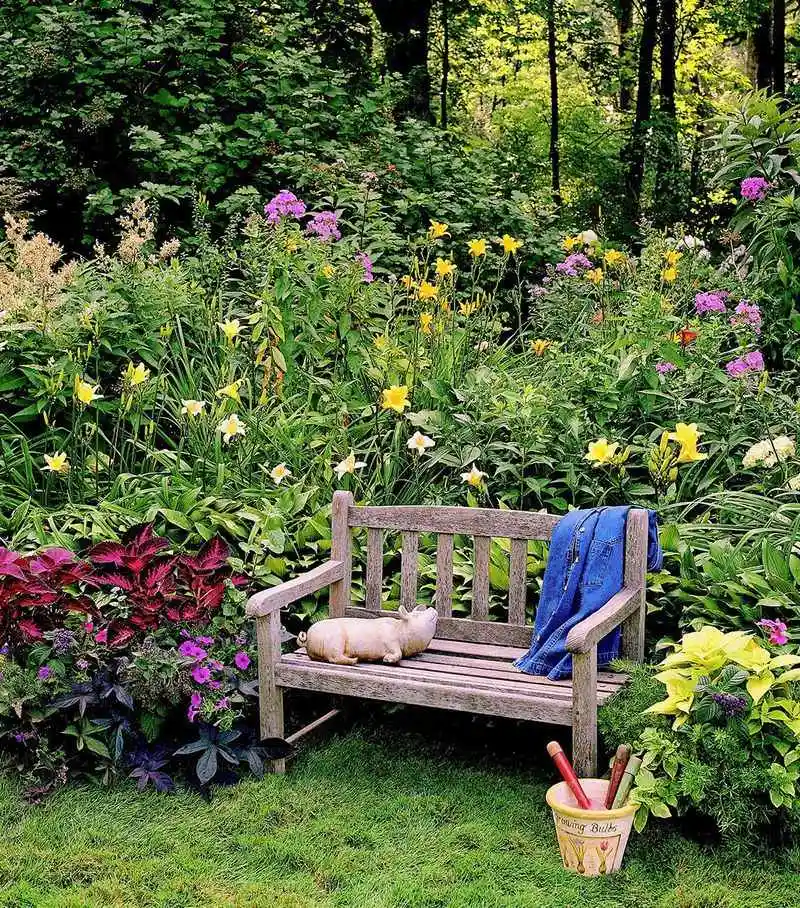
In the gentle embrace of a shade garden, serenity prevails. Picture an elderly woman planting hostas, enveloped by the dappled sunlight filtering through tree leaves.
Lush ferns and a wooden bench invite contemplation and quiet moments. The garden’s design capitalizes on shaded areas, creating a cool, restful retreat.
Fun fact: Shade gardens are ideal for woodland plants, offering a sanctuary for those seeking respite from the heat.
Butterfly Garden
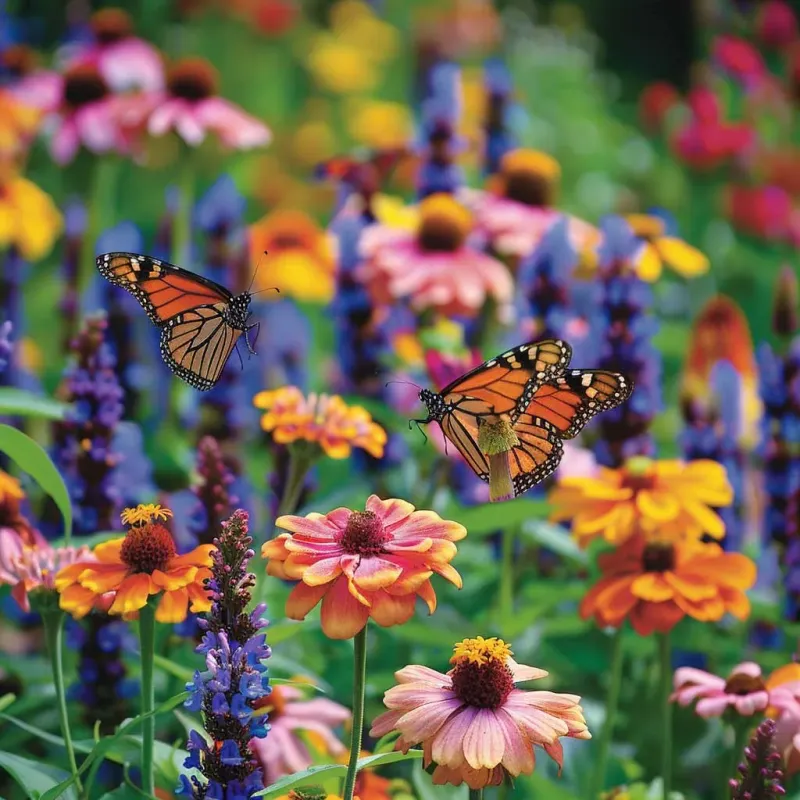
A butterfly garden is a living kaleidoscope of color and movement. Imagine a grandmother marveling at the dance of butterflies around nectar-rich flowers.
The garden is a carefully curated collection of blooms that attract these winged beauties. Each plant serves a purpose, nurturing both butterflies and the ecosystem.
Did you know? Butterfly gardens support pollination and biodiversity, providing essential habitats for butterflies and other pollinators.
Perennial Border Garden
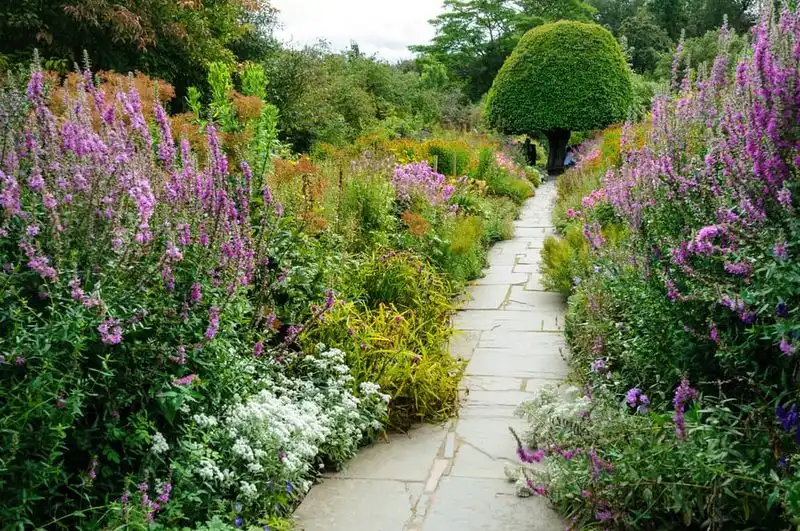
In a perennial border garden, continuity is key. Envision a grandmother arranging flowers along a classic stone path, where perennials bloom year after year.
The garden’s design emphasizes long-lasting beauty, with plants that return each season, offering a consistent display. It’s a testament to patience and planning.
Interesting tidbit: Perennial gardens are valued for their sustainability, requiring less replanting and providing ongoing beauty.
Succulent Rock Garden
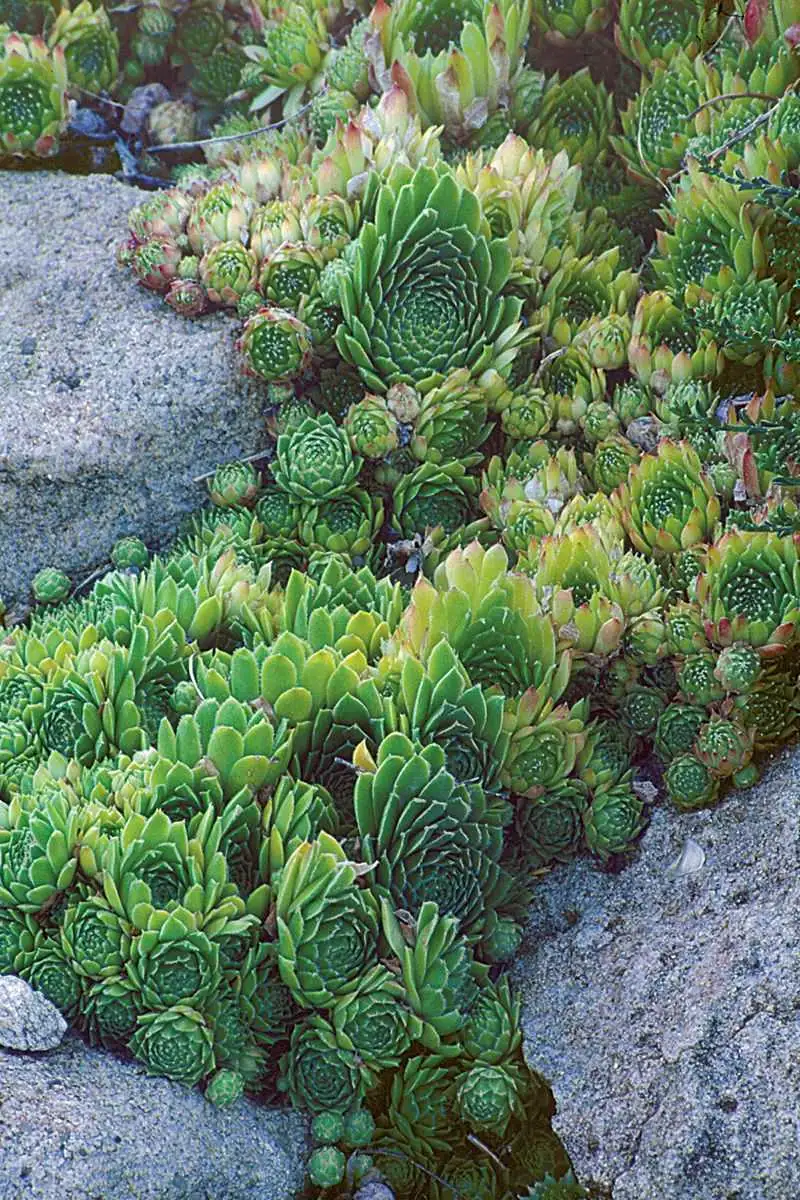
In a succulent rock garden, resilience and beauty go hand in hand. Picture an elderly woman carefully planting succulents among rocky outcrops.
The garden thrives with drought-resistant plants, showcasing nature’s adaptability and charm. It’s a reflection of wise gardening practices for arid climates.
Did you know? Succulent gardens are low-maintenance, often used in xeriscaping to conserve water and reduce environmental impact.
Grandmother’s Heirloom Perennial Garden
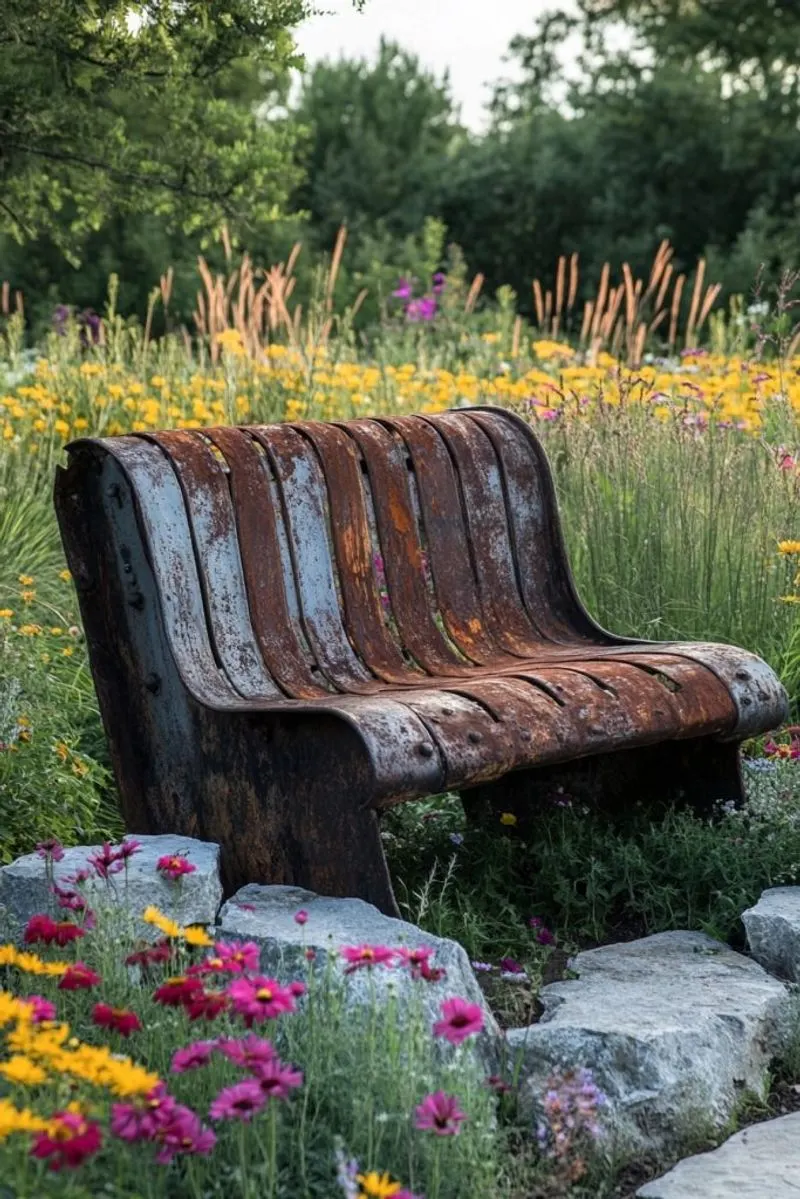
Imagine a garden where each bloom whispers stories of yesteryears. This heirloom perennial garden, lovingly curated by grandmothers, showcases a vibrant tapestry of historical blooms. Peonies, irises, and daylilies, each inherited from past generations, dance in the gentle breeze.
Every plant here is a piece of family history, connecting past to present. Vintage garden ornaments, reminiscent of simpler times, add charm and nostalgia.
This garden isn’t just a feast for the eyes; it’s a living museum, preserving memories and family traditions, while nurturing new stories for the future.

